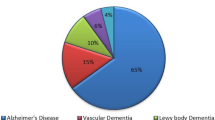Abstract
Basal forebrain cholinergic neurons are highly dependent on nerve growth factor (NGF) supply for the maintenance of their cholinergic phenotype as well as their cholinergic synaptic integrity. The precursor form of NGF, proNGF, abounds in the CNS and is highly elevated in Alzheimer’s disease. In order to obtain a deeper understanding of the NGF biology in the CNS, we have performed a series of ex vivo and in vivo investigations to elucidate the mechanisms of release, maturation and degradation of this neurotrophin. In this short review, we describe this NGF metabolic pathway, its significance for the maintenance of basal cholinergic neurons, and its dysregulation in Alzheimer’s disease. We are proposing that the conversion of proNGF to mature NGF occurs in the extracellular space by the coordinated action of zymogens, convertases, and endogenous regulators, which are released in the extracellular space in an activity-dependent fashion. We further discuss our findings of a diminished conversion of the NGF precursor molecule to its mature form in Alzheimer’s disease as well as an augmented degradation of mature NGF. These combined effects on NGF metabolism would explain the well-known cholinergic atrophy found in Alzheimer’s disease and would offer new therapeutic opportunities aimed at correcting the NGF dysmetabolism along with Aβ-induced inflammatory responses.




Similar content being viewed by others
References
Bartus, R. T., Dean, R. L., Beer, B., & Lippa, A. S. (1982). The cholinergic hypothesis of geriatric memory dysfunction. Science, 217(4588), 408–414.
Bell, K. F., Ducatenzeiler, A., Ribeiro-da Silva, A., Duff, K., Bennett, D. A., & Cuello, A. C. (2006). The amyloid pathology progresses in a neurotransmitter-specific manner. Neurobiology of Aging, 27(11), 1644–1657.
Bell, K. F., & Cuello, A. C. (2006). Altered synaptic function in Alzheimer’s disease. European Journal of Pharmacology, 545(1), 11–21.
Bowen, D. M., & Smith, C. D. (1976). Neurotransmitter related enzymes and indices of hypoxia in senile dementia and other abiotrophies. Brain, 99, 459–496.
Bruno, M. A., & Cuello, A. C. (2006). Activity-dependent release of precursor nerve growth factor, conversion to mature nerve growth factor, and its degradation by a protease cascade. Proceedings of the National Academy of Sciences of the United States of America, 103(17), 6735–6740.
Bruno, M. A., Ravid, R., & Cuello, A. C. (2006). Altered proNGF maturation and NGF degradation and the vulnerability of forebrain cholinergic neurons in Alzheimer's disease. Alzheimer’s & Dementia: The Journal of the Alzheimer's Association, 2(3)(Supplement), S476.
Bruno, M. A., Leon, W., & Cuello, A. C. (2008). Aβ-induced nerve growth factor trophic disconnection in Alzheimer's disease. Alzheimer's & Dementia: The Journal of the Alzheimer's Association, 4(Supplement 2), T633.
Cuello, A. C. (1996). Effects of trophic factors on the CNS cholinergic phenotype. Progress in Brain Research, 109, 347–358.
Cuello, A. C., & Sofroniew, M. V. (1984). The anatomy of CNS cholinergic neurons. Trends in Neurosciences, 7, 74–78.
Davies, P., & Maloney, A. J. F. (1976). Selective loss of central cholinergic neurons in Alzheimer’s disease. Lancet, 2(8000), 1403.
Debeir, T., Saragovi, H. U., & Cuello, A. C. (1999). A nerve growth factor mimetic TrkA antagonist causes withdrawal of cortical cholinergic boutons in the adult rat. Proceedings of the National Academy of Sciences of the United States of America, 96(7), 4067–4072.
Fahnestock, M., Michalski, B., Xu, B., & Coughlin, M. D. (2001). The precursor pro-nerve growth factor is the predominant form of nerve growth factor in brain and is increased in Alzheimer's disease. Molecular and Cellular Neurosciences, 18(2), 210–220.
Hock, C., Maddalena, A., Heuser, I., et al. (2000). Treatment with the selective muscarinic agonist talsaclidine decreases cerebrospinal fluid levels of total amyloid beta-peptide in patients with Alzheimer’s disease. Annals of the New York Academy of Sciences, 920, 285–291.
Hu, L., Wong, T. P., Côte, S. L., Bell, K. F., & Cuello, A. C. (2003). The impact of Abeta-plaques on cholinergic and non-cholinergic presynaptic boutons in Alzheimer’s disease-like transgenic mice. Neuroscience, 121(2), 421–432.
Lee, R., Kermani, P., Teng, K. K., & Hempstead, B. L. (2001). Science, 294, 1945–1948.
Nitsch, R. M., Slack, B. E., Wurtman, R. J., & Growdon, J. H. (1992). Release of Alzheimer amyloid precursor derivatives stimulated by activation of muscarinic acetylcholine receptors. Science, 258(5080), 304–307.
Sofroniew, M. V., Pearson, R. C., Eckenstein, F., Cuello, A. C., & Powell, T. P. (1983). Retrograde changes in cholinergic neurons in the basal forebrain of the rat following cortical damage. Brain Research, 289, 370–374.
Thoenen, H. (1995). Neurotrophins and neuronal plasticity. Science, 270(5236), 593–598.
Whitehouse, P. J., Price, D. L., Struble, R. G., Clark, A. W., Coyle, J. T., & DeLong, M. R. (1982). Alzheimer’s disease and senile dementia: loss of neurons in the basal forebrain. Science, 215, 1237–1239.
Wong, T. P., Debeir, T., Duff, K., & Cuello, A. C. (1999). Reorganization of cholinergic terminals in the cerebral cortex and hippocampus in transgenic mice carrying mutated presenilin-1 and amyloid precursor protein transgenes. J. Neurosci, 19(7), 2706–2716.
Acknowledgements
This work was supported by Canadian Institutes of Health Research grant # MOP-89360 and the Alzheimer’s Association to A. C. C.; W. L. is the recipient of a Fellowship from the University of Los Andes, Venezuela; M. F. I. is the recipient of the McGill University Provost’s Graduate Fellowship; and A. C. C. is the holder of the McGill University Charles E. Frosst Merck Chair of Pharmacology.
Author information
Authors and Affiliations
Corresponding author
Additional information
Proceedings of the XIII International Symposium on Cholinergic Mechanisms
Rights and permissions
About this article
Cite this article
Cuello, A.C., Bruno, M.A., Allard, S. et al. Cholinergic Involvement in Alzheimer’s Disease. A Link with NGF Maturation and Degradation. J Mol Neurosci 40, 230–235 (2010). https://doi.org/10.1007/s12031-009-9238-z
Received:
Accepted:
Published:
Issue Date:
DOI: https://doi.org/10.1007/s12031-009-9238-z



